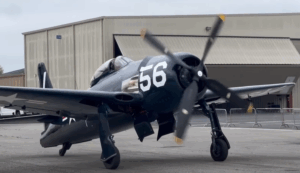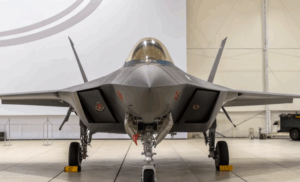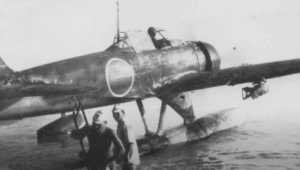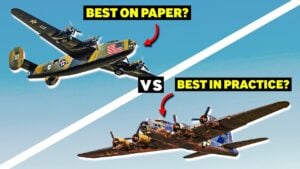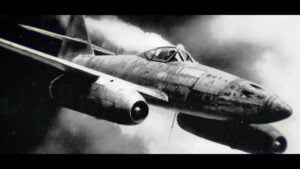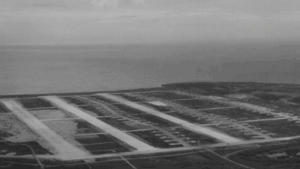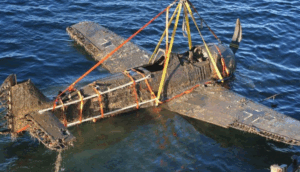Why This Plane Was Considered The U.S. Weirdest Fighter of WWII

Dogfight Aviation / YouTube
The Northrop XP-56 “Black Bullet” was one of the most unconventional aircraft ever developed during World War II. Designed to meet a U.S. government requirement for innovative fighter aircraft, it pushed the boundaries of aviation design with its near all-wing structure and unusual materials. Despite its promise, the project faced numerous challenges that ultimately led to its failure.
The plane was born out of a 1939 U.S. government directive aimed at preparing for potential conflict as tensions in Europe escalated. Aircraft manufacturers were tasked with creating advanced designs that moved away from traditional concepts. The project encouraged experimentation, offering contracts to companies like Northrop, Vultee, and Curtiss. Among these designs, Northrop’s XP-56 stood out for its daring use of a tailless, all-wing structure and its reliance on magnesium as the primary building material.

The Vision Behind the XP-56
Jack Northrop, a pioneer in aviation design, had long been interested in the concept of an all-wing aircraft. This idea aimed to maximize efficiency by integrating the plane’s body into its wing, reducing drag and increasing lift. For the XP-56, Northrop proposed a tailless design with a cockpit housed within the wing itself. This radical departure from standard aircraft configurations caught the attention of military officials eager to explore cutting-edge designs.
In addition to its shape, the XP-56 was notable for its use of magnesium. During the early 1940s, aluminum supplies were being stretched thin due to President Franklin D. Roosevelt’s ambitious goal of producing 50,000 warplanes annually. Magnesium, though lighter and strong, was notoriously difficult to work with. To overcome this, Northrop enlisted Vladimir Pavle, a skilled welder, who utilized a new “Heliarc” welding technique to fuse the magnesium components together.
Challenges in Development
From the start, the XP-56 faced technical obstacles. Its initial design relied on a Pratt & Whitney liquid-cooled engine, but when this engine was canceled, the team had to switch to an air-cooled Pratt & Whitney R-2800 radial engine. This added unexpected weight, forcing Northrop to modify the aircraft’s design, which caused delays and impacted performance.
To mitigate potential dangers during emergency situations, the XP-56 included a unique safety feature. Its rear-mounted pusher propellers were designed with an explosive cord that would eject them if the pilot needed to bail out. However, while innovative, these features did not address the larger issues that plagued the plane.

Test Flights and Problems
The first XP-56 prototype was completed in 1943, with its maiden test flight taking place at Muroc Air Base in California. Early trials revealed serious issues. The control system malfunctioned, causing stability problems, and the prototype was heavily damaged when a tire blew during a taxi test, sending it skidding off the runway. The test pilot survived, but the plane was considered beyond repair.
A second prototype was built with modifications, including a larger dorsal fin to improve stability. Despite these changes, the XP-56 continued to experience control and handling problems. Test pilots reported that it was difficult to maneuver and prone to dangerous instability, particularly at high speeds.

Why It Was Never Mass-Produced
By 1944, it became clear that the XP-56 would not meet the military’s expectations. Its performance fell far short of other fighters being developed at the time, such as the P-47 Thunderbolt and P-51 Mustang. The instability issues, combined with the challenges of working with magnesium and the high production costs, sealed its fate. The project was canceled before the plane could move into mass production, and only two prototypes were ever built.
Today, the XP-56 is remembered as an example of bold experimentation in aviation. One prototype was restored and is now displayed at the Smithsonian National Air and Space Museum, offering a glimpse into the daring innovations that defined this unique aircraft.













